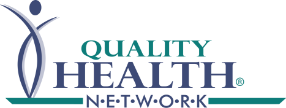The interoperability of electronic health records (EHR) is consistently one of the key factors noted in EHR provider satisfaction surveys. EHR interoperability improves workflow and allows for the consistent, accurate transfer of data among disparate EHR systems creating an environment that improves the delivery and continuity of healthcare.
The focus on interoperability continues to move to the forefront as providers work to meet the Transitions of Care (ToC) milestones in Meaningful Use Stage 2. The current National Coordinator, Karen DeSalvo, MD, MPH, MSc has championed the cause of interoperability since assuming her post in the beginning of 2014. “Clinicians are ready for data to enable and inform care and improve their efficiency… And evolving technology is providing us with promising new ways to achieve interoperability,” she writes in her recent HealthITBuzz blog.
QHN interface essential to interoperability
Western Colorado providers find interoperability through QHN central in their EHR selection process, workflow and provider to provider communication. “We told a few vendors we were looking at that they were off the table unless they had an interface with QHN,” said Dr. David Scott of the Allergy and Asthma Center of Western Colorado. “Many responded that their product feels just like an interface because your note is electronically faxed, that’s not an interface. We needed something you can look up in the ED. The QHN EHR Connectivity Matrix was a big guide for us, it was the first step to narrow our EHR choices.”
Providers can find the interface process tedious, stressful and full of tech talk difficult to understand. QHN has recently taken steps to simplify the process, increasing communication among all parties involved, working to more clearly define the objectives and milestones and improving project flow. “Our new platform is allowing us to do things previously impossible,” says Steve Nolan, QHN Technical Support and EHR Interface Analyst. “The flexibility of the new platform has increased our ability to receive various types of data and transform the data so it looks the way it should, reduce project completion times and allows us to do so much more of the work in-house. These new features provide huge advances to QHN customers.”
“I thought the process went really well,” says Dr. Scott. “Laura and Steve were very helpful in the decision making and they set-up weekly conference calls – that was a key practice for accountability – everyone had to report back on meeting their milestones. It kept me in the loop, even if I didn’t understand all the tech process.”
The value of interconnectability
“If you value the interconnectability and communication with your colleagues through QHN, which has clearly been a big part of the Western Slope success as a team taking care of our patients, and you value the way your clinical information is being presented in QHN, don’t be deterred by interface limitations, or lack of a formal interface. I worked with Steve and Laura to modify the presentation of your finished product,” continued Dr. Scott. “I wanted to make sure that when a provider looks at one of our notes that it’s readable, makes sense, and is easy to use.”



